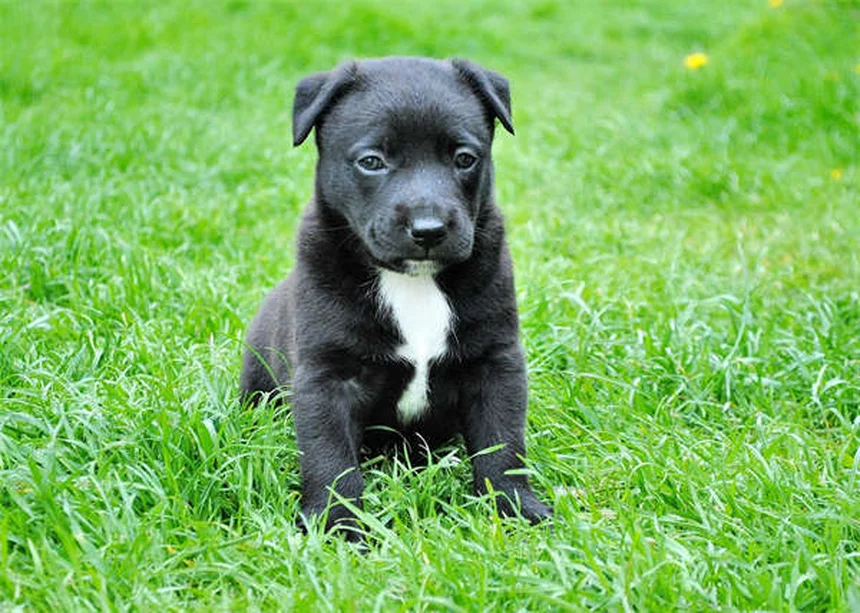Advertisement
What is leukemia in dogs? The answer is: Canine leukemia is a serious blood cancer that affects your dog's bone marrow and white blood cells. I've seen too many pet parents caught off guard by this disease, which is why I'm breaking it down for you in simple terms.Think of it like this - your dog's bone marrow is supposed to produce healthy infection-fighting cells. With leukemia, it starts making defective ones that multiply out of control. These bad cells crowd out the good ones, leaving your pup vulnerable. The scary part? Many dogs show no symptoms at first, especially with the chronic form.But here's what you need to know right now: early detection can make all the difference. In this guide, we'll cover everything from the subtle warning signs to treatment options, so you can be the best advocate for your furry friend's health.
E.g. :Flea Dirt: What It Is & How to Get Rid of It Fast
- 1、Understanding Canine Leukemia: A Dog Owner's Guide
- 2、Spotting the Warning Signs
- 3、Getting to the Bottom of It
- 4、Fighting Back Against Leukemia
- 5、Living With a Leukemia Diagnosis
- 6、Common Questions Answered
- 7、Beyond the Basics: What Most Owners Don't Know About Canine Leukemia
- 8、Cutting-Edge Developments in Treatment
- 9、Prevention Strategies That Actually Help
- 10、Financial Planning for Long-Term Care
- 11、The Silver Linings You Might Not Expect
- 12、FAQs
Understanding Canine Leukemia: A Dog Owner's Guide
What Exactly Is This Disease?
Let me break it down for you in simple terms. Leukemia in dogs is like having a factory (bone marrow) that starts producing defective soldiers (white blood cells) instead of healthy ones. These faulty cells can't protect your pup properly and eventually take over the whole system.
Imagine your dog's bone marrow as a busy production line. Normally, it creates perfect little infection-fighting machines. But with leukemia, something goes wrong in the manufacturing process. The defective cells pile up in the bloodstream and organs, crowding out the good ones. Before you know it, your dog's body is overrun with these useless imposters.
The Two Main Types You Should Know
We've got two major players in the canine leukemia world:
| Type | Speed | Cell Maturity | Common Symptoms |
|---|---|---|---|
| Chronic | Slow (months to years) | Nearly mature | Often none at first |
| Acute | Fast (weeks to months) | Immature | Severe and sudden |
Here's something interesting - did you know Golden Retrievers and German Shepherds seem to get chronic lymphocytic leukemia more often? We're not entirely sure why, but it's probably in their genes.
Spotting the Warning Signs
 Photos provided by pixabay
Photos provided by pixabay
When Your Dog Just Isn't Acting Right
You know your furry friend better than anyone. If you notice any of these red flags, it's time for a vet visit:
• Extreme tiredness (more than just lazy Sunday vibes)
• Eating less than usual
• Drinking water like it's going out of style
Other symptoms might include vomiting, diarrhea, or frequent infections that just won't quit. Some dogs develop a pot-bellied look from an enlarged liver or spleen. But remember - with chronic leukemia, your dog might seem perfectly fine at first!
Why Early Detection Matters
Think about this: would you rather catch a problem when it's small or wait until it's big? Exactly! That's why routine check-ups are so important. Your vet might spot changes in blood work before you even notice anything's wrong.
I've seen cases where a simple annual blood test caught chronic leukemia early, giving the dog several more happy years. On the flip side, acute cases often come on so fast that owners are caught completely off guard.
Getting to the Bottom of It
The Diagnostic Process Explained
First, your vet will likely do a complete blood count (CBC). This tells us if those white blood cell numbers are out of whack. But here's the thing - lots of conditions can cause high white cell counts, so we need to dig deeper.
Next might come the bone marrow test. Yes, it sounds scary, but dogs handle it better than you'd think with proper sedation. The vet uses a special needle to take a small sample - kind of like a tiny bone biopsy. This helps us see exactly what's going on in that cell factory.
 Photos provided by pixabay
Photos provided by pixabay
When Your Dog Just Isn't Acting Right
Under the microscope, we can spot those troublemaker cells. Their appearance tells us whether we're dealing with chronic or acute leukemia. Younger dogs usually get the acute form, while older pups tend to develop chronic cases.
Here's a pro tip: if your dog is diagnosed during routine blood work without symptoms, that's actually good news! It usually means we've caught a chronic case early.
Fighting Back Against Leukemia
Treatment Options Available
While we can't usually cure canine leukemia, we can often manage it well. For chronic cases, medications like chlorambucil and prednisone can keep things under control for months or even years.
Acute leukemia is tougher. Chemotherapy might buy some time, but we're talking weeks to months rather than years. The treatment focuses on keeping your dog comfortable rather than chasing a cure.
Supporting Your Dog Through Treatment
This is where you become the MVP! Simple things make a big difference:
• Quality nutrition - maybe add some omega-3 supplements
• Consistent medication schedule - set phone reminders if needed
• Plenty of rest - cozy beds and short, gentle walks
I always tell clients to think about their dog's quality of life. Are they still enjoying meals? Do they wag their tail when you come home? These little moments matter more than numbers on a blood test.
Living With a Leukemia Diagnosis
 Photos provided by pixabay
Photos provided by pixabay
When Your Dog Just Isn't Acting Right
You might need to change up your routine. Maybe shorter walks, more frequent potty breaks, or special meals. The key is watching your dog's energy levels and adjusting as needed.
Financial planning is important too. Treatments can add up, so have an honest talk with your vet about what you can reasonably afford. There's no shame in setting limits - we all want what's best for our pets within our means.
When to Seek Help
How do you know when it's time to say goodbye? This is the hardest question any pet owner faces. Look for signs like refusing food, struggling to breathe, or no longer showing interest in favorite activities.
Remember, you're not alone in this. Your vet team can help guide you through these tough decisions when the time comes. Until then, focus on making each day count with your special pup.
Common Questions Answered
What's the Typical Cost?
Diagnosis alone can run $500-$2000. Ongoing treatment varies widely - maybe $100-$350 monthly for pills or $1000+ per IV chemo session. Don't forget regular blood work to monitor progress!
How Fast Does It Progress?
Chronic cases creep up over months or years. Acute cases? They can go from zero to sixty in weeks. That's why sudden severe symptoms always warrant an immediate vet visit.
At the end of the day, every dog's journey with leukemia is unique. Stay observant, work closely with your vet, and cherish every moment with your furry family member. They're counting on you to be their advocate and source of comfort through it all.
Beyond the Basics: What Most Owners Don't Know About Canine Leukemia
The Hidden Environmental Factors
You might be surprised to learn that certain environmental exposures could play a role in canine leukemia development. Secondhand smoke isn't just bad for humans - studies show dogs in smoking households have higher cancer risks. Those cute flea collars? Some contain chemicals that might contribute to cellular damage over time.
Let me tell you about Max, a 6-year-old Beagle I knew. His owners were heavy smokers and used strong pesticide treatments in their yard. When Max developed acute leukemia, his vet suspected these constant exposures might have been contributing factors. Now, I'm not saying these things directly cause leukemia, but they're worth considering in your dog's environment.
The Emotional Toll on Pet Parents
Here's something we don't talk about enough - how emotionally draining it is to care for a dog with leukemia. You're constantly monitoring symptoms, giving medications, and worrying about blood test results. It's okay to feel overwhelmed!
I always recommend owners join support groups (online or local) where they can share experiences. You'd be amazed how comforting it is to talk with others going through the same thing. And don't forget to take care of yourself too - you can't pour from an empty cup, as they say.
Cutting-Edge Developments in Treatment
New Hope With Immunotherapy
While traditional chemotherapy remains the standard, exciting new treatments are emerging. Canine-specific immunotherapy works by boosting your dog's own immune system to fight the cancerous cells. Some veterinary schools are even testing personalized vaccines created from a dog's own cancer cells!
The best part? These treatments often have fewer side effects than chemo. A client's Labrador, Bella, participated in a clinical trial last year. While it didn't cure her leukemia, it gave her six extra months of good-quality life with minimal nausea or fatigue. Not bad for science!
Nutritional Breakthroughs Worth Considering
Did you know certain foods might help support dogs undergoing leukemia treatment? Turkey tail mushrooms (yes, really!) contain compounds that some studies suggest may enhance immune function. Omega-3 fatty acids from fish oil can help reduce inflammation too.
Here's a simple recipe one of my clients swears by: mix cooked quinoa, steamed broccoli, and sardines with your dog's regular kibble. The combination provides antioxidants, protein, and those beneficial omega-3s. Just remember to check with your vet before making dietary changes!
Prevention Strategies That Actually Help
Proactive Health Monitoring
Is your dog getting regular blood work? If not, you might be missing early warning signs. Many vets now recommend annual senior panels starting at age 6-7, which can catch subtle changes before symptoms appear.
Consider this: a $150 blood test could potentially add years to your dog's life if it catches chronic leukemia early. That's way cheaper than emergency vet visits down the road! Some pet insurance plans even cover these routine screenings - definitely worth looking into.
The Power of Dental Health
Here's a connection you probably didn't expect - chronic gum disease might increase leukemia risk. The theory is that constant inflammation from dental issues could contribute to cellular changes over time.
Brushing your dog's teeth regularly isn't just about fresh breath. It's about reducing that systemic inflammation. If your dog hates brushing (and let's be honest, most do), try dental chews approved by the Veterinary Oral Health Council. Every little bit helps!
Financial Planning for Long-Term Care
Understanding the True Costs
Treatment Type | Initial Cost | Monthly Maintenance | Potential Additional Costs---------------|--------------|--------------------|--------------------------Chronic Medication | $300-$800 | $100-$350 | Blood tests every 3-6 months ($150-$300)Acute Chemotherapy | $1,500-$5,000 | N/A | Hospitalization for complications ($800-$2,000)
These numbers can vary widely depending on your location and your dog's specific needs. The key is having an honest conversation with your vet about what you can realistically afford. Many clinics offer payment plans or can suggest more affordable alternatives.
Creative Ways to Fund Treatment
Have you considered crowdfunding? Platforms like GoFundMe have helped countless pet owners cover unexpected medical expenses. Local animal charities sometimes offer grants too - your vet's office might know about these resources.
One creative owner I knew hosted a "Puppy Pool Party" fundraiser at their home, charging $20 per dog for a day of swimming and treats. They raised over $2,000 for their Golden's treatment! Where there's a will, there's usually a way to find financial solutions.
The Silver Linings You Might Not Expect
Unexpected Bonding Opportunities
Here's the beautiful part - caring for a sick dog often deepens the human-animal bond in remarkable ways. All those quiet moments giving medication, the extra cuddles, the attentive care - they create memories that last forever.
One of my clients told me that despite the heartbreak of her dog's leukemia diagnosis, she wouldn't trade those final months for anything. They went on short "sniff walks" where her dog could take in all the smells at his own pace. They spent afternoons sunbathing together. In some ways, the illness helped them both slow down and appreciate each moment.
How This Experience Changes You
Going through this journey changes you as a pet owner. You become more observant, more patient, more appreciative of the small joys. Many owners find themselves becoming advocates for canine cancer research or volunteering at animal shelters afterward.
The truth is, while leukemia is devastating, the love you share with your dog during this time is anything but. That love - that's what really matters in the end. And that's something no disease can ever take away.
E.g. :Leukemia in Dogs | PetMD
FAQs
Q: How long can a dog live with leukemia?
A: Let me give it to you straight - it depends on the type. With acute leukemia, we're usually talking weeks to months, even with treatment. It's aggressive and moves fast. But here's some hope: dogs with chronic leukemia often live several months to years with proper care. I've personally seen cases where early detection and medication gave dogs 2-3 extra quality years. The key is catching it early through regular vet check-ups and watching for those subtle changes in your pup's behavior.
Q: What are the first signs of leukemia in dogs?
A: As an experienced pet owner myself, I always tell people to watch for these 5 red flags: extreme tiredness, decreased appetite, increased thirst, unexplained weight loss, and frequent infections. Here's the tricky part - with chronic leukemia, your dog might seem perfectly fine at first. That's why I recommend annual blood work, especially for breeds like Golden Retrievers that are more prone to this disease. Remember, you know your dog best - if something feels "off," trust your gut and get it checked.
Q: Is canine leukemia painful for my dog?
A: This is what keeps many pet parents up at night. The truth? In later stages, yes, it can cause discomfort. But here's the good news - we have ways to manage pain effectively. Medications like prednisone not only fight the cancer cells but also reduce inflammation and discomfort. I always advise clients to look for signs like reluctance to move, changes in breathing, or sensitivity when touched. The key is working closely with your vet to keep your dog comfortable through every stage.
Q: Can leukemia in dogs be cured?
A: I wish I could give you better news, but currently, there's no cure for canine leukemia. However - and this is important - we can often manage it successfully, especially the chronic form. Treatment focuses on controlling symptoms, slowing progression, and maintaining quality of life. Through my years in the field, I've learned that while we can't always add years to a dog's life, we can absolutely add life to their years with proper care, medication, and lots of love.
Q: How much does leukemia treatment cost for dogs?
A: Let's talk numbers honestly. Diagnosis alone can run $500-$2000 for all the tests. Ongoing treatment varies: oral meds might cost $100-$350 monthly, while IV chemotherapy could be $1000+ per session. Here's my advice - have an open conversation with your vet about costs upfront. Many clinics offer payment plans, and some medications have generic options. While it's not cheap, I've seen creative solutions work, like setting aside a little each month or looking into pet insurance options before diagnosis.

